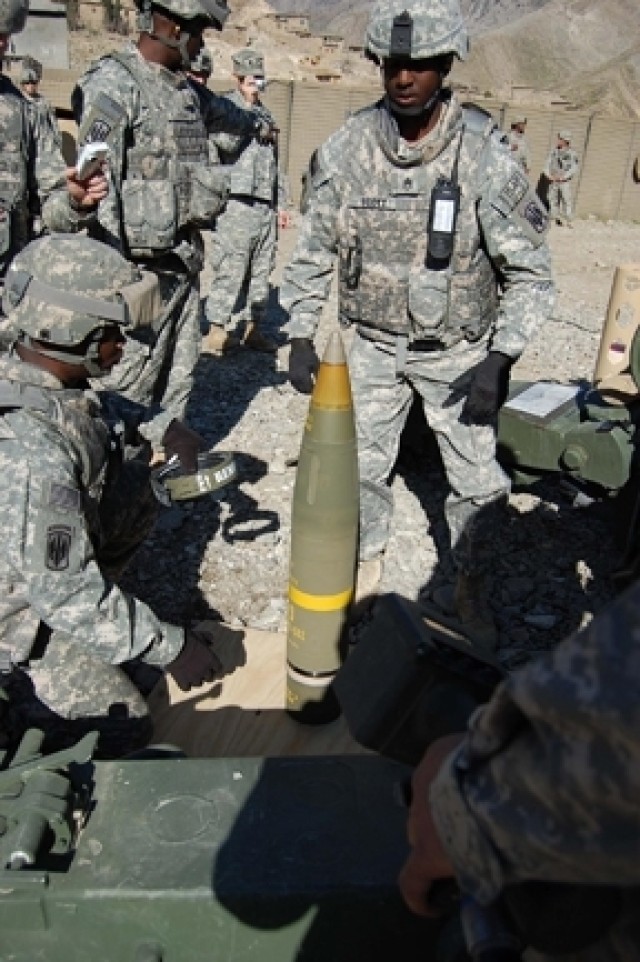PICATINNY ARSENAL, N.J. - For the first time in Afghanistan, U.S. Soldiers test-fired a 155 mm global-positioning-system-guided Excalibur artillery round fired from an M777A2 lightweight howitzer.
The firing took place in the Kunar Province Feb. 25 and was reported by the Army News Service.
The M777 Lightweight 155 mm Howitzer, which fires the Excalibur round, is designed to be a digitally programmed weapon. It is about 9,800 pounds lighter than the more commonly used M198 Howitzer and is reportedly more accurate.
Both Excalibur and the M777A2 howitzer were developed here at Picatinny.
"The main purpose of the M777A2 is that it is more able to help the units ... by providing more timely and accurate fire," explained Capt. Ryan Berdiner, commander of C Battery, 3rd Battalion, 321st Field Artillery Regiment.
Army Staff Sgt. Darius Scott of C Battery, 3rd Battalion, 321st Field Artillery Regiment, added that the Excalibur round travels farther and is designed to hit targets that conventional ammunition does not always hit.
Scott also said that by using Excalibur, the Army is mitigating a lot of collateral damage that other rounds might cause.
During the firing, the GPS-guided Excalibur round was given the proper grid coordinate to seek out and destroy a target using the Enhanced Portable Inductive Artillery Fuse Setter, which works by placing the system on the tip of the round and sending a digital message containing the coordinate for the round to find.
The test fire was deemed to be a success when word came back from the impact area that the Excalibur successfully completed its mission by finding and destroying the target at the provided grid coordinate.
Product Manager for Excalibur Lt. Col. Joseph Minus called the test firing in Afghanistan great news, saying that it, "really motivates the Picatinny team and the contractors who have been working long and hard to build Excalibur projectiles for the Army and (the Marine Corps)," he said.
Excalibur proved in Iraq, and now in Afghanistan, that cannon artillery can provide precision fires at extended ranges, Minus said.
PM lightweight 155 and PM Excalibur have been partnered and working closely together for four years in order to bring this precision strike capability to towed artillery systems, echoed joint program manager for the lightweight 155 mm Jim Shields.
The firing of Excalibur from the lightweight 155 mm during combat operations in Operation Iraqi Freedom and Operation Enduring Freedom is the culmination of a lot of hard work by Picatinny and contractor personnel, he said.
"It adds a significant improvement in both lethality and logistics ... expanding the types of roles and missions that artillery systems can take on, which is exceedingly important in this (global war on terror) environment that we're fighting in," Shields said.






Social Sharing